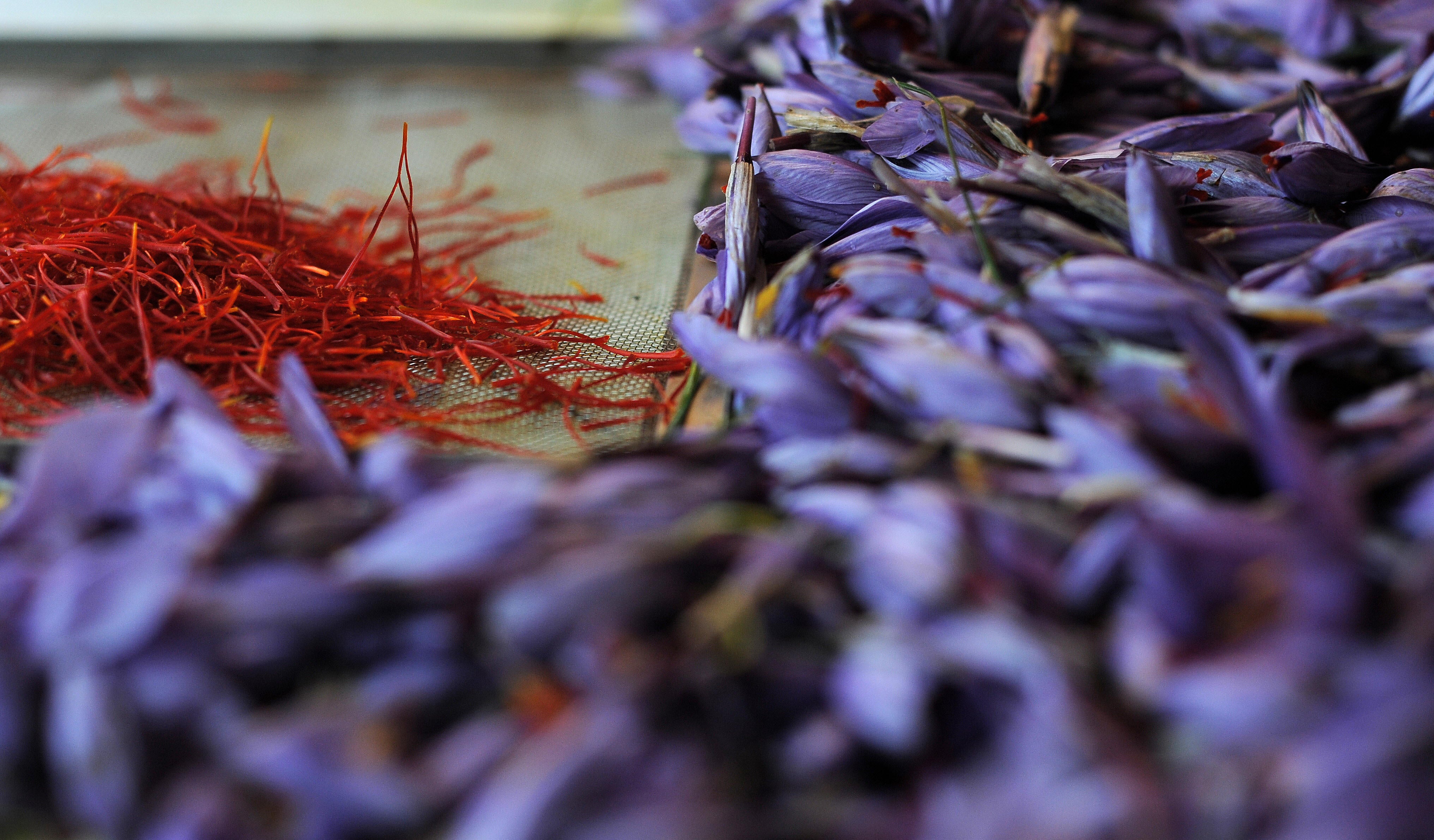Saffron was first domesticated in Bronze Age Greece, ancient art and genetics suggest
Artworks from Minoan civilisation of ancient Greece likely oldest to depict domesticated saffron, say scientists

Evidence from both ancient artworks as well as genetics suggests that saffron, the world’s most expensive spice, originated from Bronze Age Greece around 1700 BC or earlier, according to a new review of studies.
The research, published last month in the journal Frontiers in Plant Science, assessed both ancient art and recent genetics to trace the evolutionary origin of saffron Crocus sativus.
“Both ancient artworks and genetics point to Bronze Age Greece, in approximately 1700 BCE or earlier, as the origin of saffron’s domestication,” Ludwig Mann, lead author of the study from Technische Universität Dresden in Germany, said in a statement.
Researchers said the species is difficult to study genetically since it has three copies of every chromosome – instead of the usual two – and a large genome containing a high percentage of difficult-to-sequence repetitive DNA.
And since ancient Crocus remains are not preserved from historic and prehistoric times, scientists assessed ancient artworks that depict saffron-like plants hoping to find specific regions on the planet where the plant grew in the wild.
The Crocus genus, they said, has approximately 250 species, ranging from south and central Europe and north Africa to western China.
Unlike domesticated saffron, which can only be propagated asexually with human help, researchers said that many of the Crocus species reproduce sexually in the wild.
The first known use of wild crocuses by humans was as pigment for cave paintings, approximately 50,000 years ago in modern-day Iraq. Ancient texts from Sumer, Assyria, and Babylonia also describe the use of wild crocuses in medicine and dye, scientists said.
The plant is currently grown across the globe and used in cooking and perfumes and as a yellow dye.
Artworks from the Minoan civilization of ancient Greece are likely the oldest to depict domesticated saffron, they added.
Citing an example, they said the dense patches of Crocus flowers on the fresco ‘The Saffron Gatherers’ from the island of Santorini (approximately 1600 BC) suggest cultivation of these plants.
Another such mural painting on the same island, ‘The Adorants’, they noted, showed flowers with long, dark-red stigmas, that overtop dark violet petals, typical of domesticated saffron.
They found that flowers with these traits are also depicted on ceramics and cloth from Bronze Age Greece.
The results of the review are in line with findings from genetic studies from 2019 which showed that C. cartwrightianus, which only occurs in mainland Greece and Crete, is saffron’s closest wild relative.
Scientists say modern saffron crocus with its three genomes arose naturally from the wild, either exclusively from C. cartwrightianus or from hybrids between C. cartwrightianus and another crocus species.
“Around the globe today, all saffron crocuses are effectively clones dating back to saffron’s emergence in ancient Greece,” Tony Heitkam, leader of the Plant Genomics group at Technische Universität Dresden, said.
“Despite sharing the same genome, saffron can have different properties depending on the region,” Dr Heitkam said, adding that the researchers are currently investigating the molecular causes for this regional variation.
Subscribe to Independent Premium to bookmark this article
Want to bookmark your favourite articles and stories to read or reference later? Start your Independent Premium subscription today.

Join our commenting forum
Join thought-provoking conversations, follow other Independent readers and see their replies